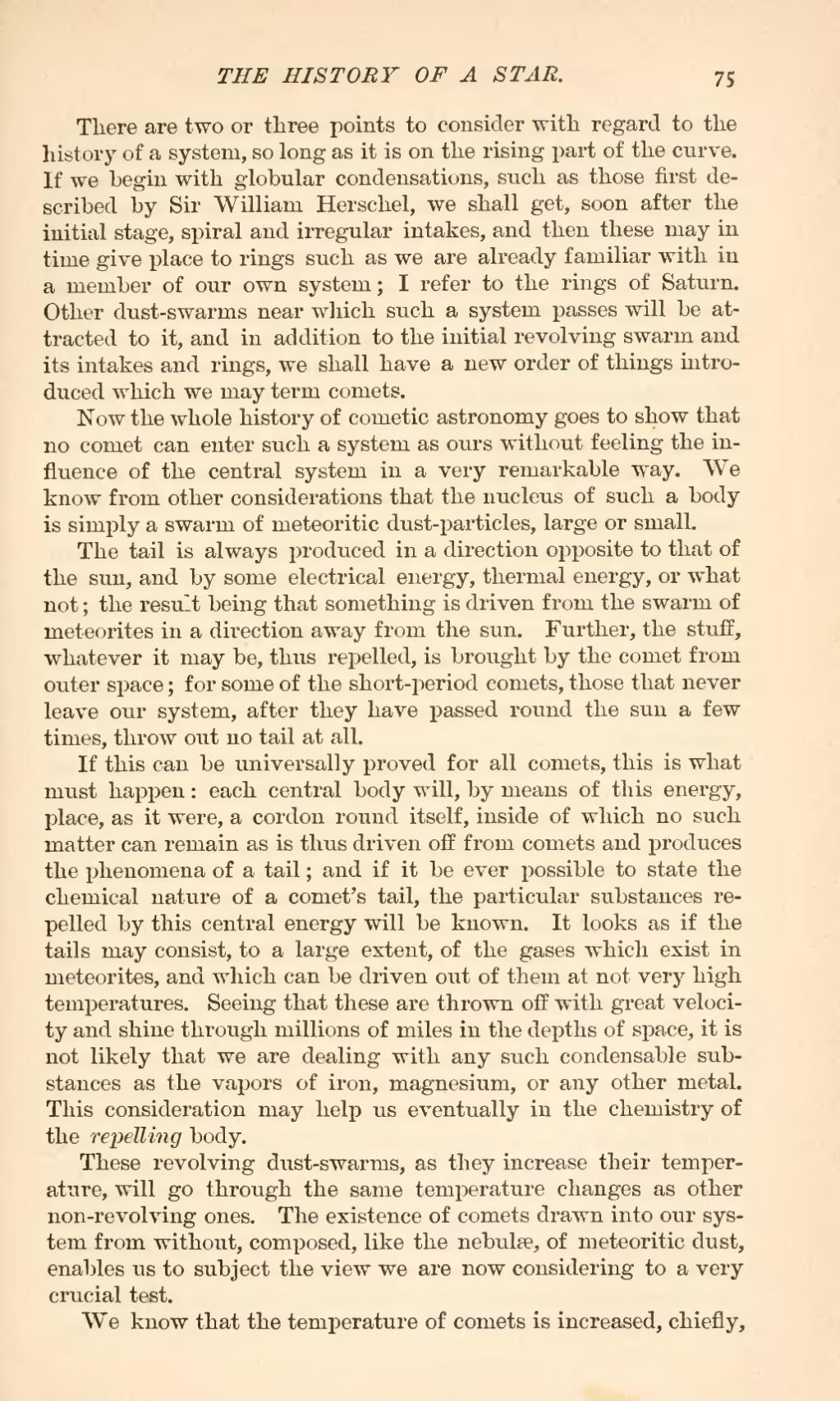There are two or three points to consider with regard to the history of a system, so long as it is on the rising part of the curve. If we begin with globular condensations, such as those first described by Sir William Herschel, we shall get, soon after the initial stage, spiral and irregular intakes, and then these may in time give place to rings such as we are already familiar with in a member of our own system; I refer to the rings of Saturn. Other dust-swarms near which such a system passes will be attracted to it, and in addition to the initial revolving swarm and its intakes and rings, we shall have a new order of things introduced which we may term comets.
Now the whole history of cometic astronomy goes to show that no comet can enter such a system as ours without feeling the influence of the central system in a very remarkable way. We know from other considerations that the nucleus of such a body is simply a swarm of meteoritic dust-particles, large or small.
The tail is always produced in a direction opposite to that of the sun, and by some electrical energy, thermal energy, or what not; the result being that something is driven from the swarm of meteorites in a direction away from the sun. Further, the stuff, whatever it may be, thus repelled, is brought by the comet from outer space; for some of the short-period comets, those that never leave our system, after they have passed round the sun a few times, throw out no tail at all.
If this can be universally proved for all comets, this is what must happen: each central body will, by means of this energy, place, as it were, a cordon round itself, inside of which no such matter can remain as is thus driven off from comets and produces the phenomena of a tail; and if it be ever possible to state the chemical nature of a comet's tail, the particular substances repelled by this central energy will be known. It looks as if the tails may consist, to a large extent, of the gases which exist in meteorites, and which can be driven out of them at not very high temperatures. Seeing that these are thrown off with great velocity and shine through millions of miles in the depths of space, it is not likely that we are dealing with any such condensable substances as the vapors of iron, magnesium, or any other metal. This consideration may help us eventually in the chemistry of the repelling body.
These revolving dust-swarms, as they increase their temperature, will go through the same temperature changes as other non-revolving ones. The existence of comets drawn into our system from without, composed, like the nebulæ, of meteoritic dust, enables us to subject the view we are now considering to a very crucial test.
We know that the temperature of comets is increased, chiefly,

